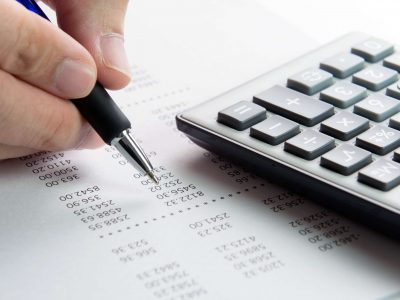Expanded Accounting Equation Definition, Formula, & Example

Detailed Financial AnalysisWhile the basic accounting equation provides a simple calculation of a firm’s value, the expanded version offers more detail, making it suitable for in-depth financial analysis. A framework for comprehending the ways in which various financial transactions affect a business’s overall financial status is offered by the extended accounting equation. It aids in the analysis of the sources, applications, and profitability of the company’s operations over a given time frame.
Real-World Examples of the Expanded Accounting Equation
Just like algebra enables you to break down complex math problems into manageable parts, understanding this equation can arm you with valuable knowledge for steering the financial strategy of your business. Remember that the total of both sides must be equal for entries being correct. However this alone does not guarantee that all transactions have been recorded correctly. Parts 2 – 6 illustrate transactions involving a sole proprietorship.Parts 7 – 10 illustrate almost identical transactions as they would take place in a corporation.Click here to skip to Part 7.
Expanded Accounting Equation: Definition, Formula, How It Works

The Financial Accounting Standards Board had a policy that allowed companies to reduce their tax liability from share-based compensation deductions. This led companies to create what some call the “contentious debit,” to defer tax liability and increase tax expense in a current period. See the article “The contentious debit—seriously” on continuous debt for further discussion of this practice. Owner’s or stockholders’ equity also reports the amounts invested into the company by the owners plus the cumulative net income of the company that has not been withdrawn or distributed to the owners. The Financial Accounting Standards Board had a policy thatallowed companies to reduce their tax liability from share-basedcompensation deductions. This led companies to create what somecall the “contentious debit,” to defer tax liability and increasetax expense in a current period.
Understanding The Common Accounting Equation

This may be difficult to understand where these changes have occurred without revenue recognised individually in this expanded equation. It is important to have more detailin this equity category to understand the debt a firm owes to others is called a(n) the effect on financialstatements from period to period. Thismay be difficult to understand where these changes have occurredwithout revenue recognized individually in this expandedequation.
Understanding When to Use Your Basic Accounting Equation
Because there are two or more accounts affected by every transaction, the accounting system is referred to as the double-entry accounting or bookkeeping system. The expanded accounting equation breaks down shareholder’s equity (otherwise known as owners’ equity) into more depth than the fundamental accounting equation. It allows analysts and accountants to see the components of shareholder’s equity and how it impacts the company. It breaks down net income and the transactions related to the owners (dividends, etc.).
Chart of Accounts

Provides greater detail on the different sections of shareholders’ equity. Adam Hayes, Ph.D., CFA, is a financial writer with 15+ years Wall Street experience as a derivatives trader. Besides his extensive derivative trading expertise, Adam is an expert in economics and behavioral finance.

See the article “Thecontentious debit—seriously” on continuous debt for furtherdiscussion of this practice. It will guide you in understanding related accounting principles and provides a foundation that will help you solve many accounting problems. Analysis of Shareholder TransactionsBy examining contributed capital and dividends, investors can comprehend how a company interacts with its owners. This analysis provides insights into shareholder relations and can influence investment decisions. The various economic events that alter shareholders’ equity represent the profits and losses that appear in the shareholders’ equity section of the balance sheet.
- Owner’s or stockholders’ equity also reports the amounts invested into the company by the owners plus the cumulative net income of the company that has not been withdrawn or distributed to the owners.
- Liabilities are obligations to pay an amount owed to a lender (creditor) based on a past transaction.
- The company will issue shares of common stock to represent stockholder ownership.
- At the point they are used, they no longer have an economic value to the organization, and their cost is now an expense to the business.
- Stockholder’s equity is reported on the balance sheetin the form of contributed capital (common stock) and retainedearnings.
- It allows analysts and accountants to see the components of shareholder’s equity and how it impacts the company.
This analysis aids in determining the risk profile and creditworthiness of the business. Retained earnings represent a company’s remaining net income after all of its dividends have been paid out to its shareholders. As you can see from all of these examples, the expanded equation always balances just like the basic equation. — At the end of the year, X ends up with large profits and the management decides to issue dividends to its shareholders. When dividends are issued, cash is disbursed to shareholders reducing assets while the dividends reduce equity.
- Remember that the total of both sides must be equal for entries being correct.
- Depending on the user of the expanded accounting equation, various levels of detail may be provided for, such as paid-in capital, dividends, incomes, expenses etc.
- This analysis provides insights into shareholder relations and can influence investment decisions.
- Let the expanded accounting equation be your guide in fraught moments like these.
- The concept of the expanded accounting equation does not extend to the asset and liability sides of the accounting equation, since those elements are not directly altered by changes in the income statement.
Assets = Liabilities + Equity
- This equation represents your company’s reality in terms of its economic resources (assets), obligations (liabilities), and residual ownership claims (ownership equity).
- Creditor AssessmentBy utilizing the extended formula, creditors and lenders can assess a company’s financial resource allocation and management over an extended period of time.
- The expanded accounting equation does not elaborate on the assets or liabilities sections of the basic accounting equation, as those components are not immediately affected by changes in income.
- This may be difficult to understand where these changes have occurred without revenue recognized individually in this expanded equation.
- Better decisions can be made by creditors, analysts, and investors by knowing the subtleties of the extended accounting equation and its repercussions.
- Rearrangement in such a way can be useful when looking at bankruptcy.
